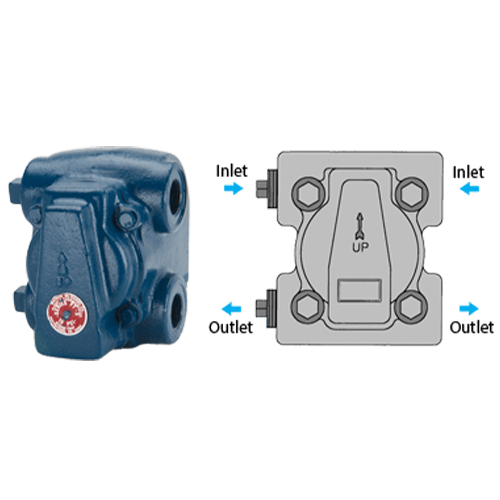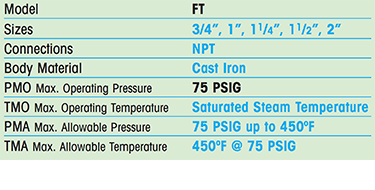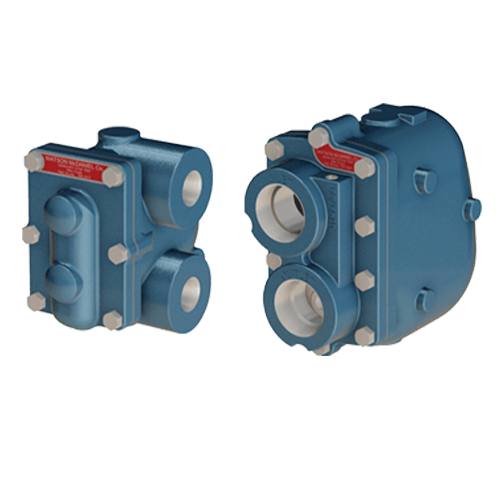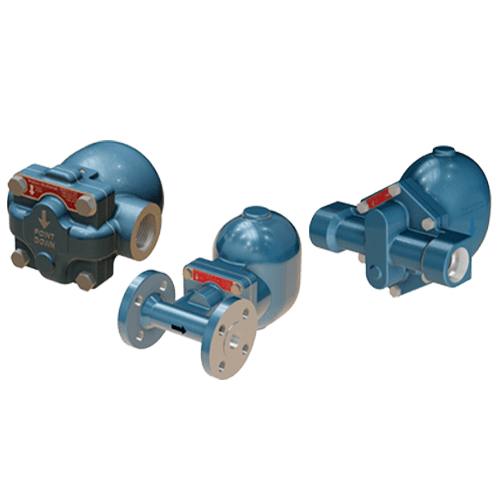Description
Application Data Sheet – Fill Out and Return for Accurate Quote
FT Float & Thermostatic Steam Traps feature:
- Cast Iron Bodies
- H-Pattern Piping Connections
- 75 psig Operating Pressures
- Stainless Steel Internals
Typically used on lower pressure HVAC and light industrial steam process applications such as unit heaters, pressing machines, heat exchangers, steam coils. Contain a welded stainless steel thermostatic air vent for rapid air removal on system start-up. The dual inlet-outlet H-Pattern connection allows for additional flexibility in installation.
Float and thermostatic traps contain a float and seat mechanism with a separate thermostatic element which work together to remove both condensate and air from the steam system.
The float, which is attached to a valve, rises and opens the valve when condensate enters the trap. This allows the condensate to discharge.
Air is discharged through the thermostatic air vent to the outlet side of the trap. Steam entering the trap causes the thermostatic element to expand, closing the air vent and trapping the steam.






